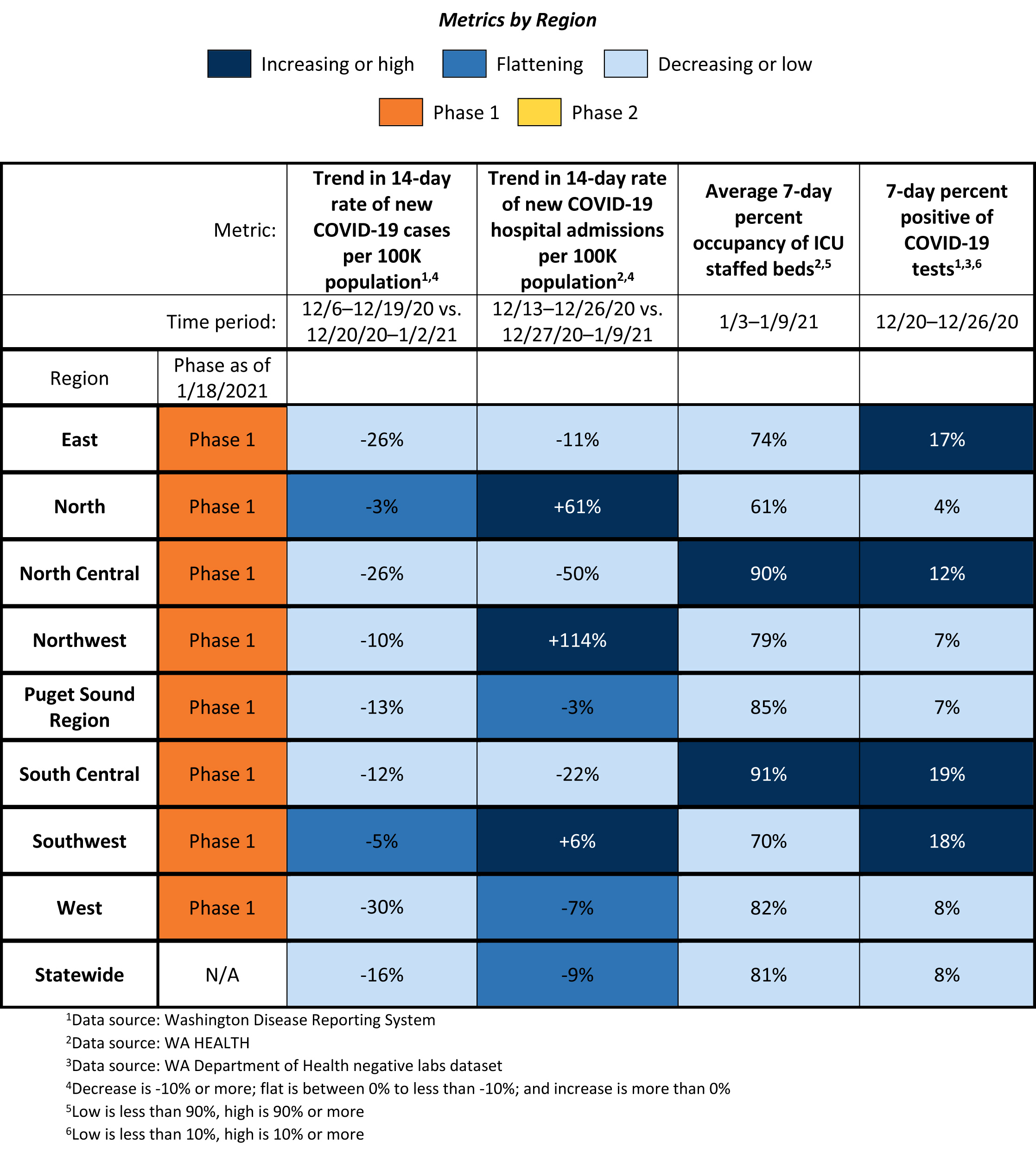Grays Harbor and Pacific counties remain in Phase 1; no regions statewide move to Phase 2


On Friday the Washington State Department of Health released the latest “Roadmap to Recovery Report” to show which phase each region in the state is in based on certain metrics.
The West Region, consisting of Grays Harbor, Pacific, Lewis, and Thurson counties met 3 out of the 4 required metrics to move to Phase 2, but did not meet requirements in the “Trend in 14-day rate of new COVID-19 hospital admissions per 100K population” category.
This means current restrictions remain in place for at least another week starting January 18.
As part of the phased “Healthy Washington — Roadmap to Recovery” plan announced by Governor Jay Inslee in early January, the phased approach of Grays Harbor and Pacific County are reliant on COVID rates in Lewis and Thurston counties.
The state is now following a regional recovery approach with every region beginning in Phase 1.
In the plan, the state was separated into 8 regions, with multiple counties included in each.
According to a release, these areas are based primarily on Emergency Medical Services (EMS) regions used for evaluating healthcare services.
There will be eight regions of four or more counties, divided according to available health care services based on metrics such as hospitalizations, case data and disease mobility.
The eight regions are:
- Central: King, Pierce, Snohomish
- East: Adams, Asotin, Ferry, Garfield, Lincoln, Pend Oreille, Spokane, Stevens, Whitman
- North: Island, San Juan, Skagit, Whatcom
- North Central: Chelan, Douglas, Grant, Okanogan
- Northwest: Clallam, Jefferson, Kitsap, Mason
- South Central: Benton, Columbia, Franklin, Kittitas, Walla Walla, Yakima
- Southwest: Clark, Cowlitz, Klickitat, Skamania, Wahkiakum
- West: Grays Harbor, Lewis, Pacific, Thurston
“Our intent is to ensure that regions, the communities within them, and our state as whole have a balanced path toward recovery from the pandemic that relies on multiple key metrics that look at disease trajectory and health system capacity” said Deputy Secretary for COVID Response Lacy Fehrenbach. “This plan offers the start of clear way forward as we continue to slow the spread of COVID-19, while we get more people vaccinated over the next few months.”
A region’s phase will be determined by the Department of Health (DOH) in response to four metric requirements. The final metrics for regions will be calculated on Friday, January 8 and will be effective January 11.
To go forward from Phase 1 to Phase 2, regions must meet all four metrics:
- Decreasing trend in two-week rate of COVID-19 cases per 100K population (decrease >10%)
- Decreasing trend in two-week rate new COVID-19 hospital admission rates per 100K population (decrease >10%)
- ICU occupancy (total — COVID-19 and non-COVID-19) of less than 90%
- COVID-19 test positivity rate of <10%
To remain in Phase 2, regions must meet at least 3 metrics:
- Decreasing or flat trend in two-week rate of COVID-19 cases per 100K population
- Decreasing or flat trend in two-week rate new COVID-19 hospital admission rates per 100K population
- ICU occupancy (total — COVID-19 and non-COVID-19) of less than 90%
- COVID-19 test positivity rate of <10%.
Regions that fail to meet two or more of the above metrics will be moved back to Phase 1.
The metrics for each region will be updated on the Risk Assessment Dashboard every Friday. Dependent on a region’s metrics, DOH will move into a new phase — forward or backward — the following Monday.
You Might Also Like




